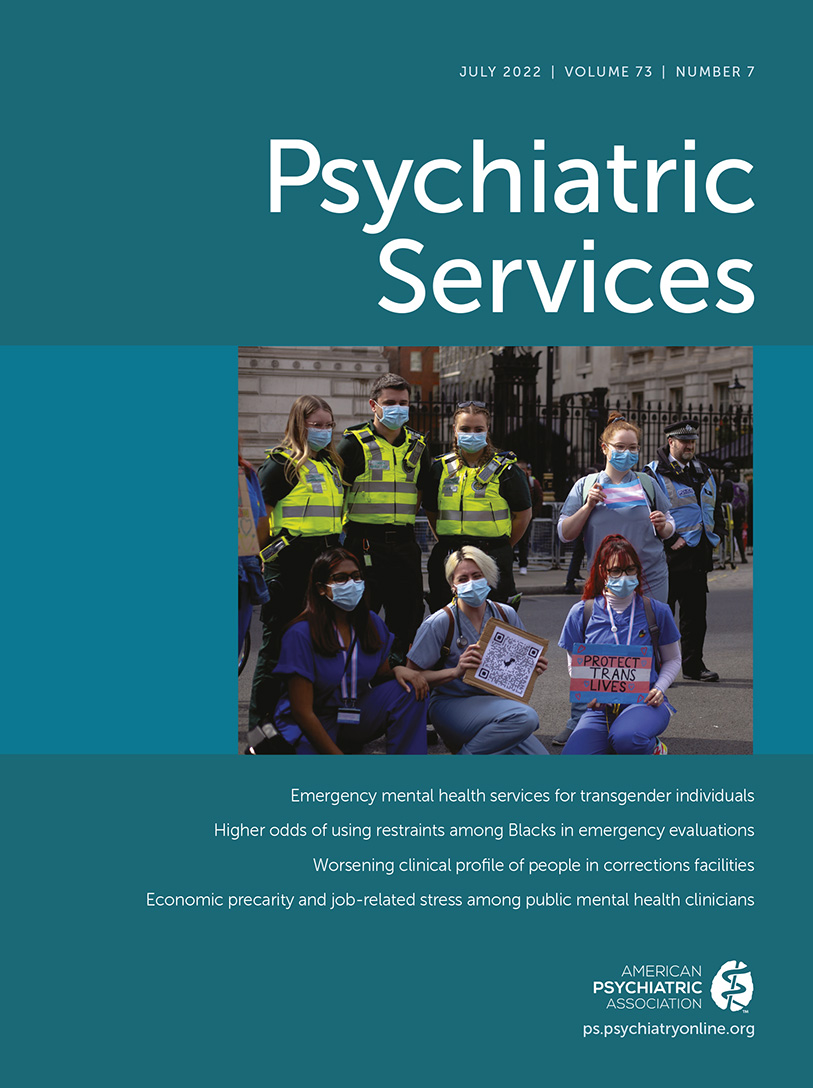Association of Black Race With Physical and Chemical Restraint Use Among Patients Undergoing Emergency Psychiatric Evaluation
Abstract
Objective:
Few studies have examined the disproportionate use of restraints for Black adults receiving emergency psychiatric care. This study sought to determine whether the odds of physical and chemical restraint use were higher for Black patients undergoing emergency psychiatric care compared with their White counterparts.
Methods:
This single-center retrospective cohort study examined 12,977 unique encounters of adults receiving an emergency psychiatric evaluation between January 1, 2014, and September 18, 2020, at a large academic medical center in Durham, North Carolina. Self-reported race categories were extracted from the electronic medical record. Primary outcomes were the presence of a behavioral physical restraint order or chemical restraint administration during the emergency department encounter. Covariates included age, sex, ethnicity, height, time of arrival, positive urine drug screen results, peak blood alcohol concentration, and diagnosis of a bipolar or psychotic disorder.
Results:
A total of 961 (7.4%) encounters involved physical restraint, and 2,047 (15.8%) involved chemical restraint. Models with and without a race covariate were compared by using quasi-likelihood information criterion scores; in each instance, the model with race performed better than the model without. Black patients were more likely to be physically (adjusted odds ratio [AOR]=1.35; 95% confidence interval [CI]=1.07–1.72) and chemically (AOR=1.33; 95% CI=1.15–1.55) restrained than White patients.
Conclusions:
After analyses were adjusted for measured confounders, Black patients undergoing psychiatric evaluation were at higher odds of experiencing physical or chemical restraint compared with White patients, which is consistent with the growing body of evidence revealing racial disparities in psychiatric care.



